 Step into the 3-acre open-air Aviation Pavilion at Seattle’s Museum of Flight anytime and, AvGeek or not, you’ll be pleasantly overwhelmed by the permanent display of 19 hulking commercial and military aircraft, including the first Air Force One jet and the first Boeing 727, 737 and 747.
Step into the 3-acre open-air Aviation Pavilion at Seattle’s Museum of Flight anytime and, AvGeek or not, you’ll be pleasantly overwhelmed by the permanent display of 19 hulking commercial and military aircraft, including the first Air Force One jet and the first Boeing 727, 737 and 747.
But tucked into the back of the gigantic exhibit space for just the next six months is an incredibly colorful and somewhat complicated visitor: a fighter jet covered inside and out with tens of millions of colorful glass beads.
Is it an art exhibition? An aviation display? Political commentary? It’s all that. And more.
The jet, and an accompanying exhibit stretching out over three rooms in the museum’s Special Exhibits Gallery in the historic Red Barn are part of The MiG-21 Project. It represents South African artist Ralph Ziman’s 5-year collaborative effort to transform a decommissioned Cold War-era, Soviet-designed MiG-21 fighter jet from a weapon of war and destruction into a dazzling and intricate kaleidoscopic work of art.
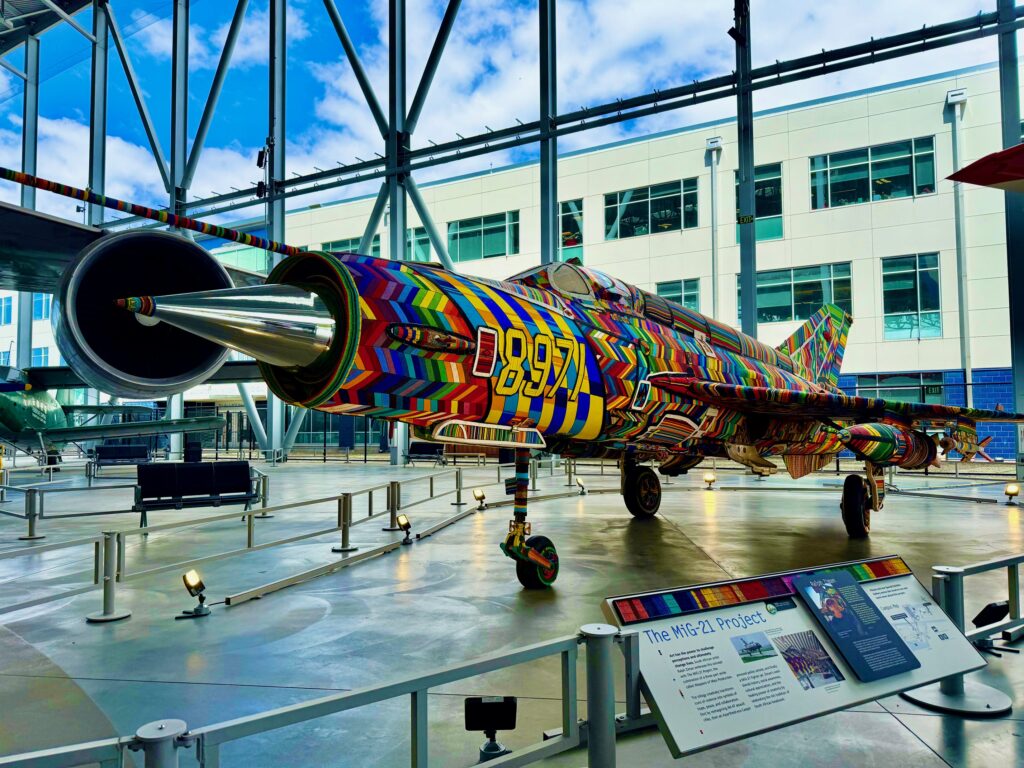
Image: Harriet Baskas
Why do it?
More than 10,000 MiG-21s have been built since the 1960s. Most are retired, but there are some places, including North Korea, India and a handful of African countries where they are still in operation.
Ziman says his goal was to take just one of the most mass-produced supersonic fighter aircraft “and turn it from a machine of war into something that looks beautiful” and, at the same time, changes its meaning.
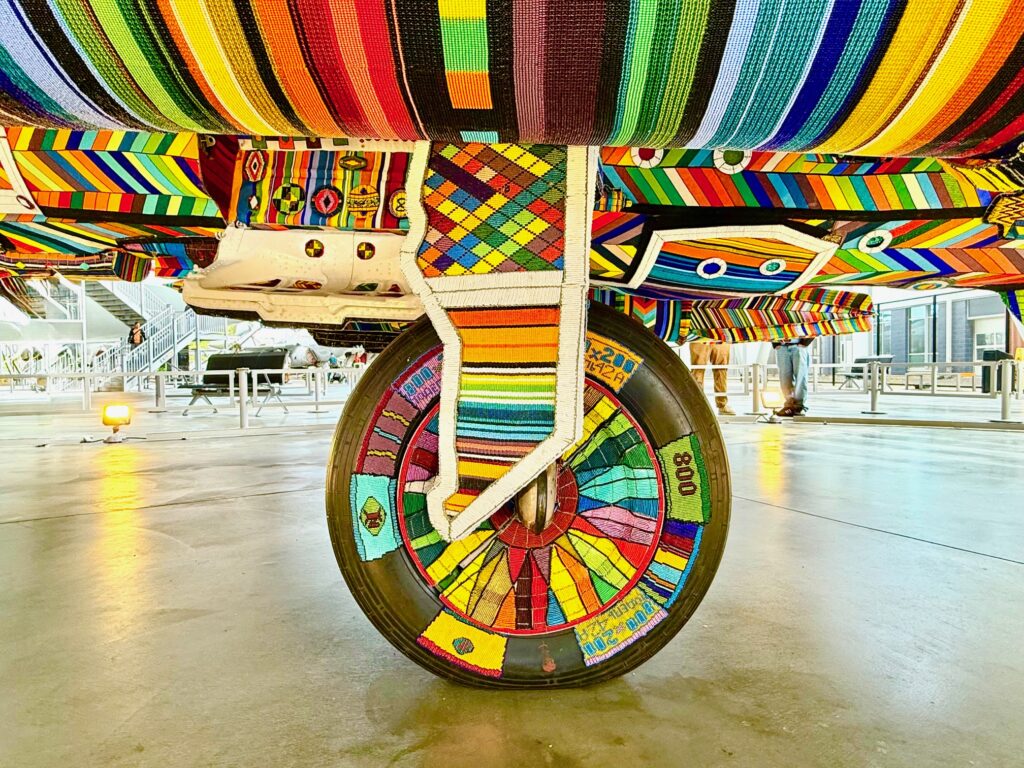
Image: Harriet Baskas
The aircraft in the MiG-21 Project is from a batch of decommissioned Polish military planes Ziman located in Florida in 2019 and arranged to have shipped across country to his studio in Los Angeles.
How did he complete the project?
He did it with the help of a large and talented team of craftspeople, bead workers and artists from Zimbabwe, South Africa and Los Angeles.
Working across time zones and through a variety of challenges, including the pandemic, the team spent five years sourcing millions of glass beads and shipping color-coded panels back and forth to South Africa.
The aircraft’s entire 51-foot by 24-foot surface, including the wheels and the cockpit, are now covered with beaded panels in bright colors and patterns that are meant to convey peace, cultural pride, and a joyous celebration of life.
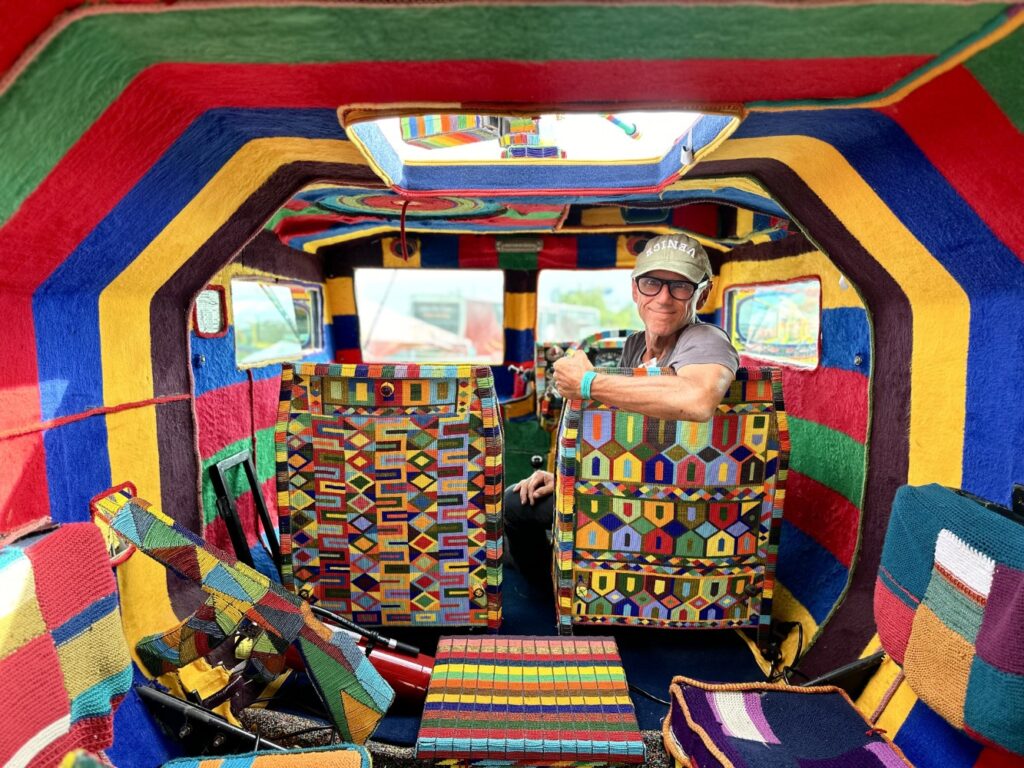
Image: Simone Niamani
In addition to covering the MiG-21 with tens of millions of colorful beads, Ralph Ziman and his team also crafted an equally, if not more impressive collection of Afrofuturistic flight suits and helmets that draw influence from military flight suits, African tribal textiles and space travel.
If you look closely, says Ziman, you can even spot where the team incorporated surplus bits and pieces of the aircraft.
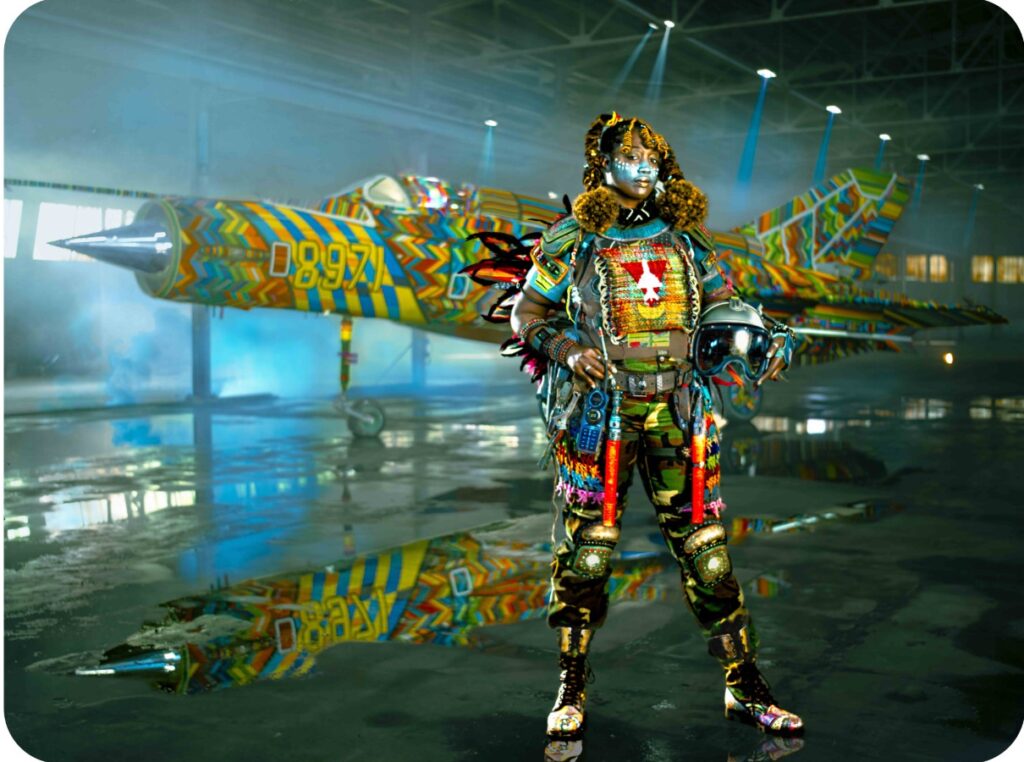
Image: Ralph Ziman & MiG-21 Project
This indoor part of the exhibition also includes original artwork, large scale photographs, videos, and assorted interactives. For broader aviation context, the Museum of Flight has drawn from its archives and its collections to add details about the history of the MiG-21 aircraft and the Cold War, as well as examples of other military aircraft that have been repurposed for civilian duties.
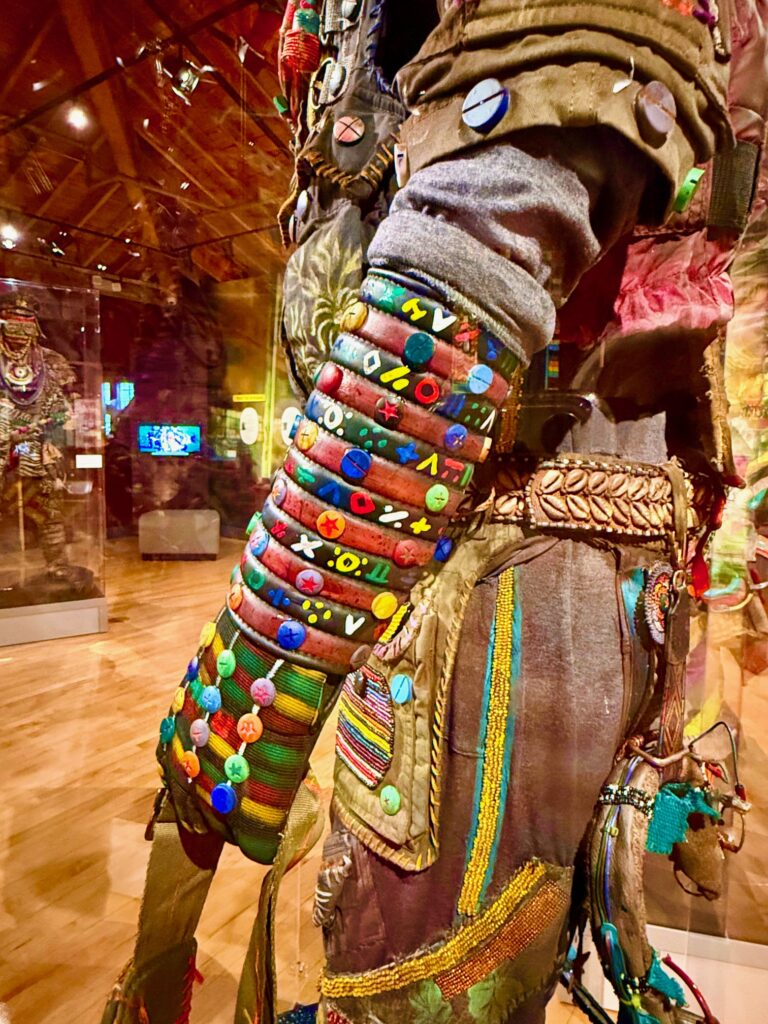
Image: Harriet Baskas
As impressive as the current exhibit is, consider that the beaded MiG-21 and related regalia represent the final piece in Ralph Ziman’s 12-year Weapons of Mass Production Trilogy.
Part 1 of the trilogy – The AK-47 Project – featured hundreds of replica AK-47 machine guns covered in beadwork using traditional patterns from Zimbabwe and South Africa.
Part 2 – The Casspir Project – encased a decommissioned Casspir military vehicle in beads.
Together with the MiG-21 project, Ziman explains, the intricate assemblages address the impact of the arms trade on global conflicts and the continued militarization of police forces around the world.
Here is a short video that explains more about The MiG-21 Project.
Related Articles:
- Women photogs explore migration with Miami International exhibit
- Inside the new Amelia Earhart Hangar Museum in Kansas
- IND Airport’s traveling mural tells the story of Afghan refugees
- New statue honors Mary Golda Ross, a Native American ‘hidden figure’
- Mural celebrates legacy of Madam C.J. Walker at Indianapolis Airport
- 3D statues at Dallas Love Field celebrate women in aviation
Feature Image: Ralph Ziman & MiG-21 Project







